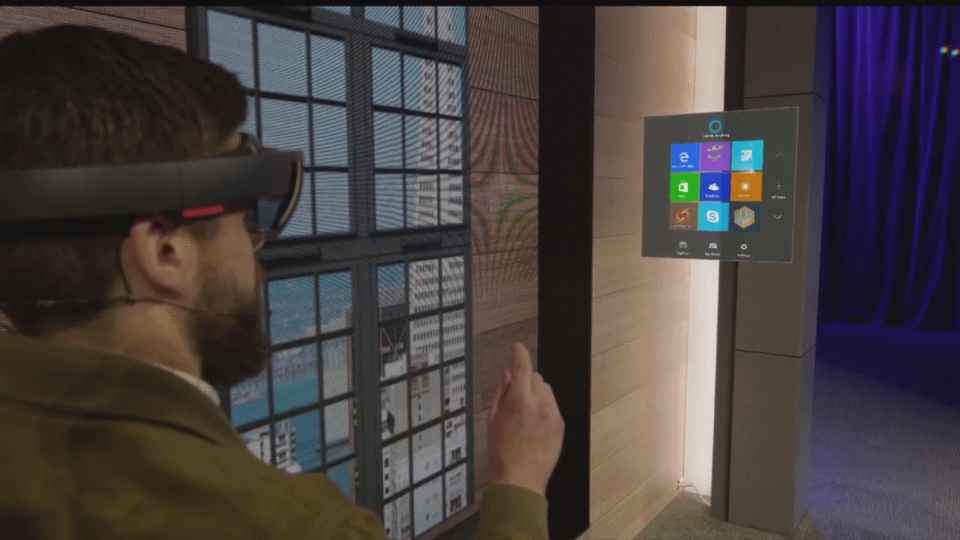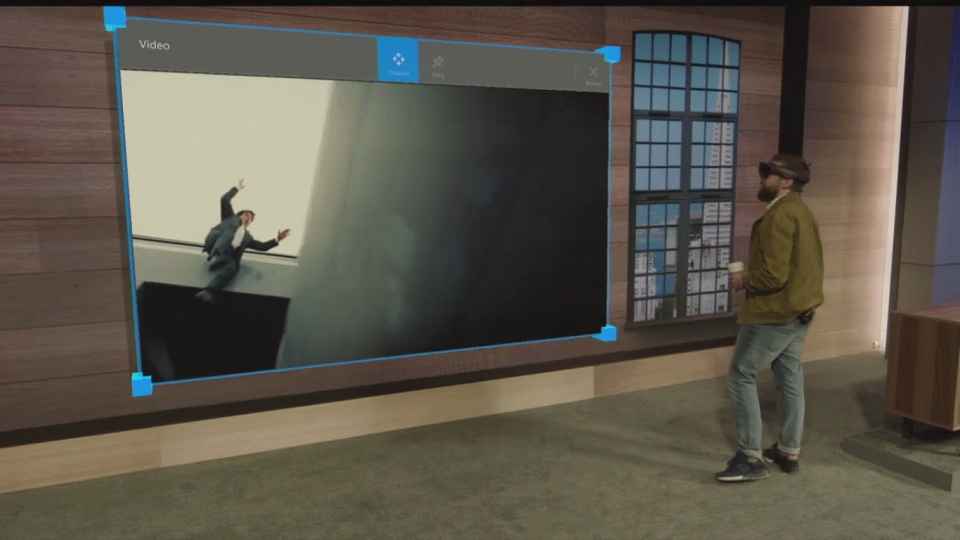Microsoft has given another impressive demonstration of its HoloLens technology, this time on stage at its Build event in San Francisco. The device not only looks more impressive than ever but it also looks far more digestible, with simple demos and easy interaction that centred on day-to-day usage.
Again Microsoft had a demonstrator wearing the HoloLens device, while a specially rigged up camera showed the rest of us what he was seeing. Set around a fake living room environment, the user had placed numerous tiles and widgets on various pieces of furniture or pinned to the wall.
A 3D representation of a cartoon Hawaiian beach was providing real-time weather updates from the island for an upcoming vacation. While a Skype window full of profile pics of close friends was pinned to the wall, in order to encourage him to keep in contact. A large calendar was sitting upright on a dresser.

^ Launching apps from a menu looked simple and quick
On the wall was an entertainment screen, a media player basically, which was shown playing movie trailers. The demonstrator simply commanded the screen to follow him, and it floated after him as he walked around the ‘house’ before he pinned it back to another wall and supersized it with gesture.
It’s all deeply impressive stuff, and even more impressive when we were told that the apps shown were running using actual Windows 10 code. That of course brings up the question of just when the headset will be available and for how much, because at the right price we think it would sell based on only the functionality shown to date, which is a fraction of its potential. unfortunately Microsoft has no released no such details yet.
Another boost of the new device came later with the announcement that the Unity game engine, which is hugely popular with app creators and many more, will support the HoloLens device. This should allow for lots of software from day one.
^ And here's a brief talk about Microsoft's thoughts on the hardware design

